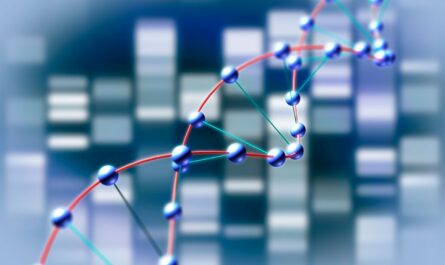In a recent study conducted by researchers from the Max Planck Institute for Marine Microbiology in Bremen, it has been discovered that extracellular vesicles play a crucial role in the exchange of genetic information among microorganisms in the sea. This finding challenges the previous assumption that direct contacts between cells, free DNA, or viruses were solely responsible for the transfer of genes. The discovery highlights the importance of a mechanism called horizontal gene transfer (HGT) in the evolution of organisms, as well as its role in the spread of antibiotic resistance in bacteria.
The study focused on the analysis of seawater samples, which contain a vast number of microorganisms. These samples were filtered to separate the viruses from the cells, and it was found that the filtered samples also contained extracellular vesicles and gene transfer agents (GTA). GTAs are virus-like particles that exclusively package host DNA, while extracellular vesicles are small vesicles enveloped by a membrane that detach from the cell surface of the host. These vesicles can contain different molecules, including enzymes, nutrients, RNA, and fragments of DNA.
The researchers, led by Susanne Erdmann, utilized a sequencing technique to analyze the host DNA in the filtered seawater samples. By assigning each DNA sequence to its respective host and determining the main transport mechanism for each host, the researchers were able to identify the role of extracellular vesicles in the transfer of genetic material. Surprisingly, they found that a significant portion of the DNA was not transported by viruses, but rather through extracellular vesicles.
Extracellular vesicles were previously considered as cellular waste, but studies in the past fifteen years have uncovered their various functions within cells. This study provides further evidence of the essential role of extracellular vesicles in the exchange of genetic material between cells. As a result, the researchers suggest changing the terminology to better reflect the importance of these vesicles. Instead of referring to the fraction containing DNA as a “virome,” they propose calling it “protected extracellular DNA” or peDNA, to encompass the diversity of non-virus-like particles such as extracellular vesicles.
The implications of this study extend beyond the oceans. The researchers believe that the findings can serve as a foundation for future research on peDNA in different ecosystems, including soil, freshwater systems, and the human gut. Understanding the role of extracellular vesicles in genetic information exchange can provide valuable insights into the mechanisms and processes involved in horizontal gene transfer. The researchers anticipate that further research will unveil more surprises and deepen our understanding of the significance of horizontal gene transfer in various ecosystems.
In conclusion, this study sheds light on the crucial role of extracellular vesicles in the exchange of genetic information among microorganisms in the sea. The findings challenge previous assumptions about the main mechanisms involved in gene transfer and emphasize the significance of horizontal gene transfer in evolution and antibiotic resistance. By recognizing the importance of extracellular vesicles, researchers can further explore their functions and mechanisms in different ecosystems, contributing to a deeper understanding of genetic exchange processes.
Note:
1. Source: Coherent Market Insights, Public sources, Desk research
2. We have leveraged AI tools to mine information and compile it



